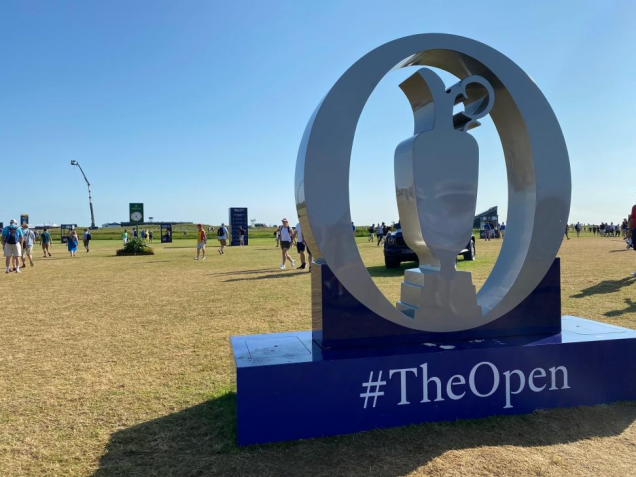TV Asahi Leverages TVU RPS, Public Internet For The Open Championship Signal Contribution
The setup reduced how much equipment and staff the broadcaster had to send to the U.K.

SANDWICH, U.K.—Japanese broadcaster TV Asahi supplemented the host broadcaster’s world feed coverage of The Open Championship with two TVU Remote Production Systems (RPS), the company announced today.
Synchronized signals from Royal St. George’s Golf Course in Sandwich, Kent, U.K., were sent over IP networks for production at the TV Asahi studios in Tokyo, TVU Networks said.
Twelve synchronized signals were sent from the golf course to the TV Asahi studios. The signals included coverage such as: wireless cameras from the golf course; locally switched signals of Japanese players in action; multiple camera angles from each hole; and the host broadcaster’s world feed backup and world feed preview, it said.
With each signal synchronized, frame-accurate switching between the live feeds was easy. TV Asahi was able to produce scenes that transitioned from golfer to golfer and hole to hole—a critical element of live golf production, the company said.
“We created a localized feed that we knew our viewers would appreciate,” said Itaru Takata of the equipment and operation management center of TV Asahi. “TVU RPS allowed us to enrich our programming with feeds targeting our audience. Our audience got to enjoy cheering on the tournament leaders and all of the Japanese players.”
Using the public internet instead of satellite or dedicated fiber saved considerable expense for the broadcaster. The production also required less crew and equipment than what’s needed with a typical mobile truck scenario
“The set up greatly reduced the equipment and the staff at the event, which was a key consideration, given tight COVID restrictions in the U.K., Japan and the rest of the world,” he added.
Get the TV Tech Newsletter
The professional video industry's #1 source for news, trends and product and tech information. Sign up below.
TVU RPS leverages existing studio infrastructures and the public internet to synchronize multi-camera live remote production. It’s available in four- and six-channel versions. Feeds are synchronized from the venue, sent to the broadcaster’s studio for on-air delivery, while a bi-directional IFB maintains communication between locations, the company said.
Phil Kurz is a contributing editor to TV Tech. He has written about TV and video technology for more than 30 years and served as editor of three leading industry magazines. He earned a Bachelor of Journalism and a Master’s Degree in Journalism from the University of Missouri-Columbia School of Journalism.

